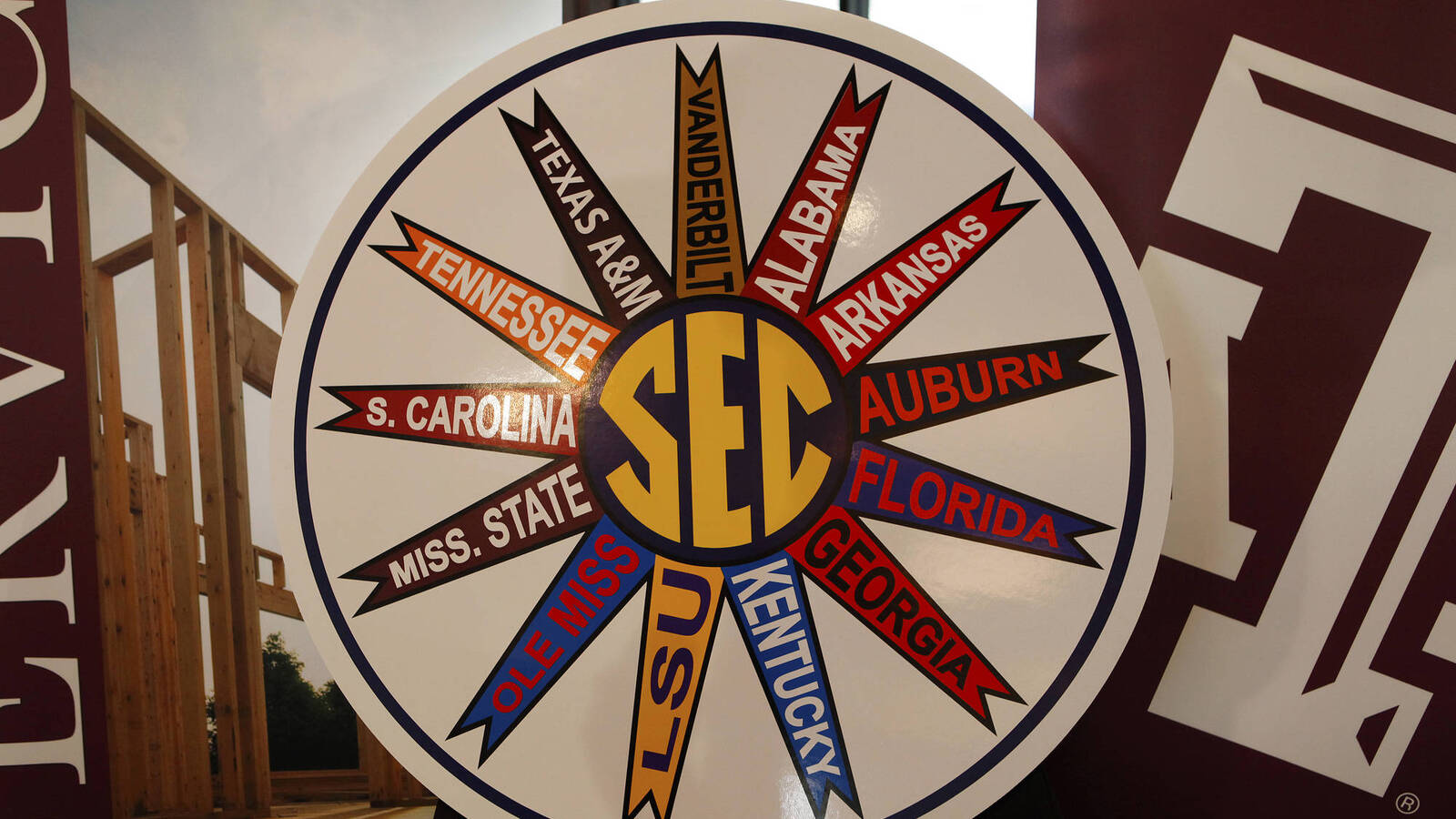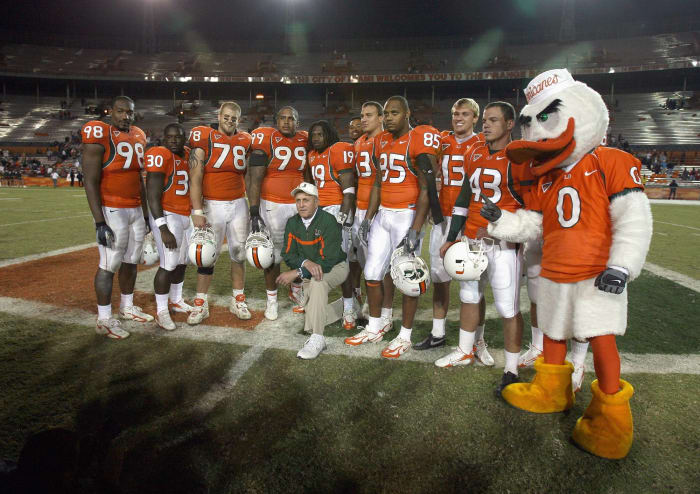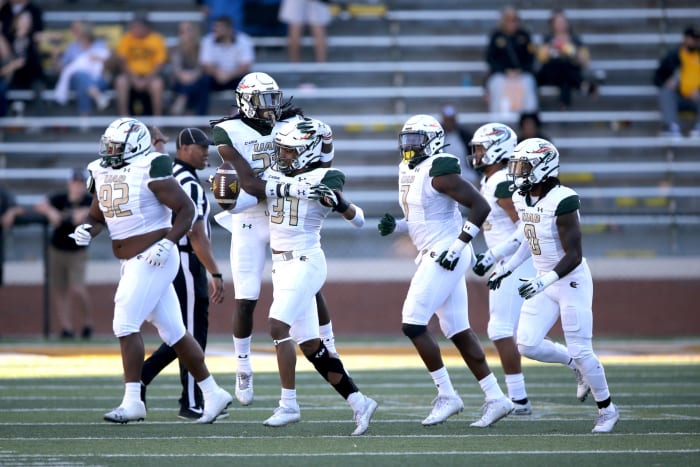- Home
- Quizzes
- My Quiz Activity
- Newsletters
- MY FAVORITES
- Add Sports/Teams
- SPORTS
-
NFL
- NFL Home
- Arizona Cardinals
- Atlanta Falcons
- Baltimore Ravens
- Buffalo Bills
- Carolina Panthers
- Chicago Bears
- Cincinnati Bengals
- Cleveland Browns
- Dallas Cowboys
- Denver Broncos
- Detroit Lions
- Green Bay Packers
- Houston Texans
- Indianapolis Colts
- Jacksonville Jaguars
- Kansas City Chiefs
- Las Vegas Raiders
- Los Angeles Chargers
- Los Angeles Rams
- Miami Dolphins
- Minnesota Vikings
- New England Patriots
- New Orleans Saints
- New York Jets
- New York Giants
- Philadelphia Eagles
- Pittsburgh Steelers
- San Francisco 49ers
- Seattle Seahawks
- Tampa Bay Buccaneers
- Tennessee Titans
- Washington Commanders
-
MLB
- MLB Home
- Athletics
- Arizona Diamondbacks
- Atlanta Braves
- Baltimore Orioles
- Boston Red Sox
- Chicago White Sox
- Chicago Cubs
- Cincinnati Reds
- Cleveland Guardians
- Colorado Rockies
- Detroit Tigers
- Houston Astros
- Kansas City Royals
- Los Angeles Angels
- Los Angeles Dodgers
- Miami Marlins
- Milwaukee Brewers
- Minnesota Twins
- New York Yankees
- New York Mets
- Philadelphia Phillies
- Pittsburgh Pirates
- San Diego Padres
- San Francisco Giants
- Seattle Mariners
- St. Louis Cardinals
- Tampa Bay Rays
- Texas Rangers
- Toronto Blue Jays
- Washington Nationals
-
NBA
- NBA Home
- Atlanta Hawks
- Boston Celtics
- Brooklyn Nets
- Charlotte Hornets
- Chicago Bulls
- Cleveland Cavaliers
- Dallas Mavericks
- Denver Nuggets
- Detroit Pistons
- Golden State Warriors
- Houston Rockets
- Indiana Pacers
- Los Angeles Clippers
- Los Angeles Lakers
- Memphis Grizzlies
- Miami Heat
- Milwaukee Bucks
- Minnesota Timberwolves
- New Orleans Pelicans
- New York Knicks
- Oklahoma City Thunder
- Orlando Magic
- Philadelphia 76ers
- Phoenix Suns
- Portland Trail Blazers
- Sacramento Kings
- San Antonio Spurs
- Toronto Raptors
- Utah Jazz
- Washington Wizards
-
NHL
- NHL Home
- Anaheim Ducks
- Boston Bruins
- Buffalo Sabres
- Calgary Flames
- Carolina Hurricanes
- Chicago Blackhawks
- Colorado Avalanche
- Columbus Blue Jackets
- Dallas Stars
- Detroit Red Wings
- Edmonton Oilers
- Florida Panthers
- Los Angeles Kings
- Minnesota Wild
- Montreal Canadiens
- Nashville Predators
- New Jersey Devils
- New York Islanders
- New York Rangers
- Ottawa Senators
- Philadelphia Flyers
- Pittsburgh Penguins
- San Jose Sharks
- Seattle Kraken
- St. Louis Blues
- Tampa Bay Lightning
- Toronto Maple Leafs
- Utah Mammoth
- Vancouver Canucks
- Vegas Golden Knights
- Washington Capitals
- Winnipeg Jets
- NCAAF
- NCAAM
- Olympics
- Boxing
- Entertainment
- Lifestyle
- Golf
- MMA
- Soccer
- Tennis
- Wrestling
- Sports Betting
- More Sports
- RESOURCES
- My Account
- YB on Facebook
- YB on Twitter
- YB on Flipboard
- Contact Us
- Privacy Policy
- Terms of Service

Looking back at over 50 years of college football conference realignment
When news broke out about Texas and Oklahoma were leaving the Big 12 for the SEC it created a firestorm that has fans and administrators wondering what the domino effect will be. Will the SEC look to bring in more members? Will an arms race begin among the power five leagues? How will all this shake out?
We think that because that has been the norm over the last several decades. Everyone plays in peace until someone rattles the cage. One conference's ambition tends to force a ripple effect throughout college athletics -- and when I say "college athletics", it typically means college football.
For a long time, there wasn't much conference expansion. Michigan State joined the Big Ten in 1950, marking the first new addition in the league in 38 years. The ACC went nearly 30 years from its formation before it expanded. The SEC went nearly 60 years before expanding. This is a fairly newer concept that is now motivated by money instead of an alignment of like-minded universities with geographic ties.
So with the SEC's latest expansion, let's look at the last 50 years of conference realignment of the major college football conferences.
Looking back at over 50 years of college football conference realignment

When news broke out about in the summer of 2021 that Texas and Oklahoma were leaving the Big 12 for the SEC it created a firestorm that has fans and administrators wondering what the domino effect will be. The firestorm continued one year later when USC and UCLA shocked the college athletics world by announcing they were leaving for the Big Ten in 2024. Dominoes kept falling as that move, plus the Pac-12's inability to find a satisfactory broadcast rights deal, led to a max exodus that produced one of the more remarkable days in sports history and the possible demise of one of the oldest conferences in sports.
We think that because that has been the norm over the last several decades. Everyone plays in peace until someone rattles the cage. One conference's ambition tends to force a ripple effect throughout college athletics -- and when I say "college athletics", it typically means college football.
For a long time, there wasn't much conference expansion. Michigan State joined the Big Ten in 1950, marking the first new addition in the league in 38 years. The ACC went nearly 30 years from its formation before it expanded. The SEC went nearly 60 years before expanding. This is a fairly newer concept that is now motivated by money instead of an alignment of like-minded universities with geographic ties.
So with the Big Ten's and SEC's latest expansion, let's look at the last 50+ years of conference realignment of the major college football conferences.
1971: South Carolina leaves the ACC

For nearly 20 years, the ACC rolled with their original eight schools before South Carolina decided to leave for independence in 1971. South Carolina wasn't the first ACC school to complain about "Tobacco Road bias" in the league, but they were the first to do anything about it. The Gamecocks, like Virginia, Maryland and Clemson, felt that the league was skewed too far to the Big Four -- Duke, North Carolina, NC State, and Wake Forest -- that they were being treated unfairly by the league office ... which is in Greensboro.
This all came to a head, of course, due to basketball. The Gamecocks felt slighted due to eligibility concerns of Mike Grosso, who chose South Carolina instead of Duke, among others. Duke claimed Gamecocks head coach Frank McGuire was playing Grosso despite him not earning the requisite SAT score in high school to earn a scholarship. Duke's AD was adamant about investigating the South Carolina basketball and football programs (Duke even canceled games against the Gamecocks). The school decided to leave the hostility and go independent in 1971.
1978: Arizona, Arizona State joins Pac-8

Arizona and Arizona State left the WAC for the Pac-8 (which would become the Pac-10). At the time, Arizona State really didn't want to leave the WAC as they were dominating the conference and were one of the best teams in the west. Arizona led the charge in order to be included in the west's best conference that was chocked full of high academic universities. The Sun Devils also had a favorable advantage of the WAC champion being contracted to play in the new Fiesta Bowl ... which was played at Sun Devils Stadium. There was a split between the two schools that Arizona eventually won. Arizona State understood the need for both schools to stay together and felt that while joining the Pac-10 would hurt a bit on the field, it would be beneficial financially.
Interestingly enough, this wasn't a done deal. Some in the Pac-8 weren't sold on the need to expand. After USC (and UCLA) threatened to walk out of the league unless expansion was passed, the rest of the conference agreed to add the two Arizona schools.
1983: Georgia Tech joins the ACC

Remember that what was the traditional ACC and SEC were once combined into one conference -- the Southern Conference -- until the western half of the conference formed their own league, the Southeastern Conference, in the early 1930s. The eastern schools would go on to form the ACC in 1953. Georgia Tech was part of the SEC at the time and was a conference power. However, in 1964, Tech left the conference to gain its independence and become the Notre Dame of the South.
That didn't happen and the program slipped into irrelevance. The ACC threw a lifeline to the school to extend their reach further south. Seven years later, the Yellow Jackets would win the Citrus Bowl and a share of the national championship.
1991: Big East forms a football league

When the 1990s came around, many independent schools were looking to join conferences (as you will see shortly). Just as is the case today, money was a driving factor as schools considered their football fortunes ahead of almost anything else. The Big East wasn't immune to it -- a basketball power conference that had several members (Syracuse, Pittsburgh, Boston College) surveying the landscape for a football landing spot.
To appease them, the Big East decided to form a football conference, and in doing so added Miami as a full member and Rutgers, Temple, Virginia Tech, and West Virginia as football-only members. Rutgers and West Virginia would join as full members in 1995; Notre Dame became a non-football member the same season. Virginia Tech became a full member in 2000.
Miami would win the national championship in the Big East's first season, and in their 13 seasons in the league would win 9 conference championships. They would also win the 2001 national championship.
1992: Arkansas, South Carolina join the SEC

After the Big Ten made a bold move by adding Penn State (more on that in a bit), it got the SEC believing they needed to expand for the first time in its 58-year history. It was a wild time as many independent schools were looking at joining conferences for the first time. Seemingly, the SEC had their pick of a number of fantastic programs. However, there was one problem.
Not all of them wanted to join the SEC.
That seems insane to think now, but that was the case in the early 1990s. In what was a controversial move at the time, the SEC decided to go after SWC schools instead of independents -- a direct shot at another conference. They went after Arkansas, Texas, and Texas A&M to expand the league's footprint and to add more brand strength to the conference. Arkansas, who was tired of the Texas-centric philosophy of the SWC and the myriad of off-field issues of the league, jumped at the chance to join the SEC. Texas and Texas A&M ... as well as Texas legislators ... said no.
For their 12th member, the SEC went after both Florida State and Miami, mainly because they wanted the ACC and the newly forming Big East to not have a foundation in the state of Florida. Both were independents and the Southeastern Conference wouldn't ruffle any more conferences by inviting them. The Seminoles were intrigued but felt that they'd be looked at as Florida's little brother in the league. As the ACC came calling for Florida State, the SEC decided to move on to Miami. The Hurricanes, as a private school, didn't feel like they belonged in the SEC and wanted to be part of the new Big East. That left South Carolina, who had had already agreed that they'd say yes if the SEC ever asked them the join the band. The SEC did, South Carolina said yes, and the league got their 12-team conference and a league championship game.
1992: Florida State joins the ACC

Quite simply, the ACC made this move in order to be taken seriously as a football league. Sure, the conference had two national champions in the previous decade (Clemson, Georgia Tech) but the ACC was a basketball league that no one feared on the gridiron.
Florida State was a power. The Seminoles went 53-8 in the previous five seasons and finished in the top five in each of the final Associated Press polls. They won their first 29 ACC games and first nine ACC championships (and 11 of their first 12). Florida State has won all three of their national championships as members of the Atlantic Coast Conference and was the first cog to bringing respectability to football in the league. Before FSU's entry into the league, the ACC never had a Heisman Trophy winner. They instantly had won in the 'Noles Charlie Ward in 1993, and three since -- two of them Seminoles.
1993: Penn State joins Big Ten

In what many people point to as the big move that triggered 1990s realignment, Penn State ... a proud independent football program ... joined the Big Ten in 1990 (they began play in 1993). It was the conference's first addition in 40 years (they even made a clever alteration to their logo). Penn State's head coach Joe Paterno had been trying to form an east coast football conference for years but failed. After years of wooing the Big Ten, Penn State's attractiveness as an eastern public school and a great research university (that also had a really good football program) the Nittany Lions were in.
The addition of Penn State has been wildly successful, though there have been some low points. In just their second year in the Big Ten, the Nittany Lions went 12-0 but finished #2 in the final rankings, behind Nebraska. Penn State would routinely challenge for Big Ten titles and Rose Bowl berths before hitting a slump in the early 2000s. The Nittany Lions hit a rebirth in 2005 before the ghastly Jerry Sandusky scandal led to Paterno's firing. Under current head coach James Franklin, Penn State is still one of the top programs in the conference and nationally.
1996: Texas, Texas A&M, Baylor, Texas Tech, Big 8 form Big 12

The formation of the Big 12 is also linked with the death of the Southwest Conference, one of the oldest leagues in college sports. After Arkansas left the SWC in 1992, it opened the floodgates for the eight remaining schools -- all in Texas -- to look for better opportunities. The league was hit hard by member schools being sanctioned by the NCAA -- most notably SMU football receiving the "Death Penalty" in 1987 and 1988 -- that hurt those programs and the rest of the league. Television revenue was down since SMU games were banned from being broadcast and the league lacked national championship contenders.
When the Big 8 invited Texas, Texas A&M, Baylor, and Texas Tech to join their league, it was an offer they couldn't refuse. Not only were they joining a stable environment, but would be side-by-side some of the most relevant programs in college football. At the time, Nebraska won three national championships in four years, and Colorado was suddenly one of the best programs nationally. Not to mention the Oklahoma-Texas rivalry would now be in-house.
The new Big 12 would split into North and South divisions and would continue to be a power nationally. SMU, TCU, and Rice moved to the WAC, while Houston would be an original member of the new Conference USA. The SWC was no more.
1999: Mountain West splits from the WAC

For a long time, there were three major college football conferences in the west: the Pac-8/10/12, the WAC, and Big West. When the Big 12 was formed and the Southwest Conference folded in 1996, it left SWC teams scrambling for a new home. The WAC took in TCU, Rice and SMU, Big West members UNLV and San Jose State, and independent Tulsa to form a 16 team league that would play in "quadrants". Sound familiar?
It wouldn't last very long. The conference was too big -- both in member size and geographically -- to function. Members BYU, Utah, Air Force, Colorado State, and Wyoming met in Denver and decided to break away from the WAC to form their own league (they would invite New Mexico, San Diego State, and UNLV to join them). The Mountain West was formed and began play in 1999.
The WAC was split with just eight members, while the Big West was down to six. In 2000, the Big West decided to drop football, with the WAC picking up Boise State and Louisiana Tech (New Mexico State and Idaho joined the Sun Belt). The WAC saw TCU leave for Conference USA in 2001. The ripple effect of the ACC's raid of the Big East saw WAC members leave to join Conference USA, which was being raided by the Big East.
Soon after, WAC members Boise State, Nevada, Fresno State, Utah State, and San Jose State left for the Mountain West. Hawaii, which now was at a traveling disadvantage, left for the MWC as well. Other members left for the Sun Belt and Conference USA, leaving just New Mexico State and Idaho as football members. After the 2012 season, the WAC ... who once housed 1984 national champion BYU ... stopped sponsoring football.
While the proud WAC and Big West are no longer sponsoring football, the Mountain West is still going strong. The conference is up to 12 teams after adding former WAC schools. BYU would leave to become an independent and Utah left for the Pac-12 in 2012; TCU would join the Big 12 in 2013.
2004: Miami, Virginia Tech join the ACC

The ACC wanted to bulk up its football resume again and had their sights set on adding Miami -- who had went 46-4 in the previous four seasons and won a national championship. Their invitation to Miami was met with anger by the Hurricanes' current conference, the Big East, and lawsuits began to fly. Once the ACC found out from the NCAA it needed to expand from 9 to 12 teams to hold a lucrative conference championship game, it looked to add Syracuse and Boston College as well.
When Virginia's governor put pressure on the ACC and the University of Virginia to add Virginia Tech, the league switched Syracuse with the Hokies to get quicker approval. That made for the uncomfortable situation of Virginia Tech part of a lawsuit against the ACC's expansion and then jumping onto the league's roster. The league added the two schools with hopes to petition the NCAA for an 11-team league to hold a conference championship game.
2005: Boston College joins the ACC

Well, the NCAA didn't allow the ACC's request for an 11-team league to hold a conference championship game at the time, so the ACC needed to add one more team. Boston College originally was supposed to join the league with Miami and Syracuse, only to have Virginia Tech subbed in for Syracuse at the last minute, and at least one ACC school voted "no" on an offer to BC. Boston College was also a defendant in a lawsuit by fellow members of the Big East but was taken off when they were left at the alter (the Big East offered to add BC to the list of plaintiffs). When the ACC voted to invite Boston College as the 12th member of their conference, the Big East put the Eagles back on the lawsuit as a defendant.
Due to the five months-long gap between the Miami and Virginia Tech invites and Boston College's, the Eagles would have to wait a year to enter the ACC. The league formed two non-geographical divisions (the "Atlantic" and "Coastal") and was finally able to host a league championship game.
The Big East needed to replace the three schools and would invite five schools to join their league. Three were football schools (Cincinnati, Louisville, South Florida) while DePaul and Marquette would compete in everything else.
2011: Nebraska joins the Big Ten

Twenty years after the Big Ten shook up college athletics by adding Penn State, the conference did it again, prying Nebraska from the Big 12 and creating a 12-team Big Ten (yeah). This allowed the league to split into two divisions (the infamous "Leaders" and "Legends" divisions before coming to their senses and just going by geography in 2014) and hold a conference championship game.
At the time, Nebraska was an amazing get. The Cornhuskers were dominant under Bob Devaney and Tom Osborne in the 1970s through the 1990s, winning five national championships and many Big 8 and Big 12 titles. In fact, the Huskers were coming off two 10-win seasons under Bo Pelini as they entered the Big Ten. It hasn't stayed that way, however, as the program has struggled with its identity since switching leagues. Nebraska has struggled in recent seasons and hasn't been to a Big Ten title game since 2012, in which they lost 70-31.
In any event, the move began another conference arms race.
2011: Colorado, Utah join Pac-12

The Pac-10 was poised to make a big move. As Nebraska was set to leave the Big 12 for the Big Ten, the Pac-10 saw an opportunity to strike. Commissioner Larry Scott invited Texas, Oklahoma, Oklahoma State, Texas A&M, Colorado, and Texas Tech to also leave the Big 12 to form a super conference that would be named the Pac-16. Colorado saw Nebraska, their biggest rival, leave and felt the Big 12 becoming unstable. They quickly accepted the invitation. Texas leveraged the Pac-10's overture into a better deal back with the Big 12, and the other four schools stuck with the Longhorns. With not many options in the west to expand, the Pac-10 invited Mountain West member Utah to become the final member of the newly named Pac-12.
It has been a mixed bag. The Pac-12 missed on its conference network, which keeps a lot of games off the air nationally. While Utah took a major step up in conference affiliation, Colorado has suffered a bit from the lack of exposure and watched as the Big 12 began doling out more money to their members. After 13 years in the Pac-12, both Colorado and Utah would change course (more on that later).
2012: Texas A&M, Missouri join the SEC

The Big 12 was in trouble, as Colorado and Nebraska left for the Pac-12 and Big Ten, respectively. Texas spurned the Pac-12 and was launching its Longhorn Network which was seen by fellow conference members as a huge advantage the Horns were going to have in recruiting and financial status. Texas A&M was greatly turned off by Texas (it was rumored the Longhorn Network would show high school games of Longhorns' recruits) and were outwardly flirting with the SEC about wanting to join. While the SEC wasn't pining to expand an already stout league, adding a team from the Lone Star State is an offer they couldn't refuse. Publicly, it seemed like a done deal but there were the expected lawsuits and hard feelings that attached themselves to a move this big.
Missouri was a bit of a different fit. Geographically, they did fit with Kentucky and Arkansas, but culturally it was a different story. Originally, Missouri wanted to join the Big Ten but the league took Nebraska and only Nebraska (eventually that would change). Missouri was openly flaunting themselves at the Big Ten that when the SEC was looking for a 12th member, Mizzou was ready to take the call.
Both have performed well in the SEC. Missouri won two SEC East titles in their first three seasons and Texas A&M produced a Heisman trophy winner in Johnny Manziel. There have been ups and downs since, but neither school would trade a thing.
2012: West Virginia, TCU join Big 12

With Nebraska, Missouri, Colorado, and Texas A&M leaving the league, the Big 12 quickly needed to add a couple of schools to try to stabilize the conference. TCU was a rising star who had bounced around after the SWC folded in 1996. They left the WAC for Conference USA, then moved to the Mountain West when the Big 12 came calling. The Horned Frogs won at least 11 games in six of their seven seasons in the Mountain West, including an undefeated season in 2010. The Frogs would replace Texas A&M as the fourth Texas school in the conference.
West Virginia was another story. While typically a solid program, their marriage to the Big 12 came more out of convenience than anything else. The conference needed a tenth member while the Mountaineers were trying to jump off a sinking ship called the Big East. Geographically it made no sense, but both sides needed to link up to survive.
2013: Syracuse, Pittsburgh, Notre Dame join the ACC

Nearly a decade after the ACC and Big East clashed over-expansion, the two leagues were at odds again ... but this felt very different. In 2011, both Syracuse and Pittsburgh applied for admission to the ACC (the league immediately accepted) which put the Big East on life support. Syracuse was ready to join the ACC in 2004 but politics or the league's side and pleading on the university's side kept that from happening then. Now, the ACC expanded its geographic footprint in the northeast and added the New York and western Pennsylvania markets and their decade-long raid of the Big East was ready to break up that league (more on that in a bit).
A year later, Notre Dame informed the Big East that it was going to leave for the ACC as well. While that didn't affect the football side of things for the Big East, it was a big win for the ACC. Their agreement was that the Fighting Irish will play five games against ACC schools each year, giving the league some high-profile games built into their schedule. It also formed an agreement that if Notre Dame were to join a conference for football, it would have to be the ACC. In fact, the Irish would join the ACC for the 2020 football season due to the global pandemic.
2013: End of the Big East/Start of AAC

When the Big East became a football conference in 1991, it was already a sore subject throughout the league. What was once a compilation of east coast basketball programs now became a loose partnership where the basketball schools felt as if the football schools were making all the league's decisions. It wasn't the tight-knit atmosphere of the 1980s as the Big East turned too ... well ... big.
When the ACC began their raid of the Big East in the mid-2000s, the Big East countered by adding Cincinnati, Louisville, and South Florida as members (as well as DePaul and Marquette as non-football members) and UConn's young football program (Temple was kicked out). The league grew to a 16-team behemoth in basketball and a subpar product in football. When Syracuse, Pittsburgh, Notre Dame, and, eventually, Louisville announced they were leaving for the ACC, that began a spiraling of trying to keep the football league alive. There were invites sent to TCU, Boise State, San Diego State, and Navy to join as football-only members and UCF, SMU, Houston, Memphis, and Temple (again) as full members. As other schools like Rutgers and West Virginia left the league, the Big East pulled in Tulane and East Carolina.
This created a huge schism within the conference. The basketball-only schools ... by then dubbed the "Catholic 7" ... were done with all of this. Instead of the Big East as it once was, now you were asking Georgetown and St. John's to travel to East Carolina and Tulane? The Catholic 7 (Georgetown, St. John's, Seton Hall, Marquette, DePaul, Providence, and Villanova) decided to separate from the league, add Creighton, Butler, and Xavier and keep the Big East name. As the league was splitting, TCU, Boise State, and San Diego State decided against joining the Big East, which was now dead, football speaking.
Big East football holdovers Cincinnati, UConn and South Florida (as well as Louisville and Rutgers, who were in limbo before joining the ACC and Big Ten, respectively, in 2014) would form the American Athletic Conference. UCF, SMU, Houston, Memphis, and Temple -- aka the schools the Big East feverishly added -- would join the AAC as well. The following year as Louisville and Rutgers left, East Carolina, Tulane, and Tulsa were added.
2014: Louisville joins the ACC

What a wild few years for Louisville! In 1996, the Cardinals left independence to join Conference USA. In 2005, Louisville joined the Big East after the ACC's initial raid of the conference. When the Big East collapsed, the Cards played one year in the American Athletic Conference (going 12-1) before joining the ACC. The Cardinals were invited to the ACC after original member Maryland left for the Big Ten. Louisville would become a contender in the league and have their first Heisman trophy winner in Lamar Jackson.
Not only was this a wild decade for Louisville, but for the ACC as well. A decade after prying Miami, Virginia Tech, and Boston College from the Big East, they successfully gutted the league by adding Syracuse, Pittsburgh, Notre Dame, and Louisville and putting the blood of the death of Big East football on their hands.
2014: Maryland, Rutgers join the Big Ten

If there is anything that points to recent conference realignment being more about money than sport, look no further than the Big Ten gobbling up Maryland and Rutgers.
The Big Ten got to enter the east coast markets of New York City and Washington, D.C. to sell Big Ten Network subscriptions. Meanwhile, Maryland and Rutgers get an infusion of cash that both schools and athletic departments desperately needed. Maryland was slashing athletic programs while Rutgers was hemorrhaging money and living in the volatile Big East, and both wanted in on the money that the Big Ten's television contracts would provide. None of it was about football or any other sport for that matter.
Rutgers has gone 10-51 in conference play since joining the Big Ten and has been downright embarrassing at times. Maryland hasn't fared much better, going 16-41 in the Big Ten, and would be a cellar dweller in the East Division if it wasn't for Rutgers already living there. To many on the outside, this was a very sore issue in regards to conference realignment.
2020: Notre Dame football is an ACC member for a season

The COVID-19 pandemic had an affect on all facets of life, including college football. In the fall of 2020, there were so many unknowns about how college football could even have a season that most leagues kept conference-only schedules. Because of that Notre Dame, a lifelong independent, had virtually no one they could schedule.
The ACC, whom Notre Dame has a relationship with (the Irish house all their sports in the ACC, aside from football and hockey), came to the rescue by bringing the Irish in as a football member for the 2020 season. Notre Dame would actually finish atop the ACC regular season standings and played Clemson in the ACC championship game. Clemson would win that game, but both schools ended up in the College Football Playoff (and both lost in the semifinals).
When the season ended, Notre Dame went back its football independence.
2023: BYU, Cincinnati, Houston, UCF join the Big 12

When Oklahoma and Texas stunned the college football world by announcing they'd be moving to the SEC (more on that in a bit), the Big 12 was on the verge of collapse. Would more teams leave for the other Power 5 leagues or could the league regroup and fortify its future. The league did a great job extracting four programs who not only have been successful recently, but operate in four big markets. BYU leaves their independent status for a ticket at the Power 5 table. Houston finally comes back to join their former Southwest Conference rivals Texas Tech, Baylor and TCU in the big leagues. Cincinnati had a brief taste of major conference life before the Big East dissolved. UCF has taken a major leap from moving from FCS status 25 years ago and into the Big 12.
2023: AAC raids Conference USA of six schools

One of the more interesting arms races after Oklahoma and Texas left the Big 12 for the SEC was among the AAC, Mountain West, Sun Belt and Conference USA. The AAC, who lost three schools to the Big 12, initially tried to lure a few Mountain West schools to their league but those schools balked. Then the AAC turned its attention to Conference USA and pulled Charlotte, Florida Atlantic, North Texas, Rice, UAB and UTSA in. When all is said and done, the AAC will have 14 members ... many of which in major markets. The league will have teams in Birmingham, Charlotte, Dallas, Houston, Memphis, Miami, New Orleans, Philadelphia, San Antonio, Tampa and Tulsa.
Not long after that announcement, Marshall, Old Dominion and Southern Miss announced they were leaving Conference USA for the Sun Belt Conference. This move was a major hit for the C-USA, marking nine schools leaving all at once with limited options to replace them. The Sun Belt also nabbed FCS power James Madison.
As of this time, it is believed there could be more moves to come and Conference USA's status of an FBS league is tenuous at best. It has shown a lot of cards among the Group of 5 -- the AAC is still trying to retain its status as the top league in that Group, the Mountain West fancies itself as the same, the Sun Belt is coming on strong as a very good league with passionate fanbases, while the MAC prefers its insular geographic ties.
2024: Oklahoma, Texas join the SEC

When the news broke that Texas and Oklahoma were trying to get into the Southeastern Conference, it was earth-shattering. Texas is one of the biggest brands in college athletics and Oklahoma has been dominating the Big 12 for a decade and filling the NFL with quarterbacks. The fact that these two left a conference that they basically ran to join up with the league that has won 11 of the last 15 national championships turned a lot of heads.
The news also got everyone thinking about this being the beginning of the end of college football as we know it, especially after the Big Ten countered by poaching USC and UCLA from the Pac-12. Is the SEC planning world domination? Will the Big 12 survive? What will happen to the ACC? Will Notre Dame give up their independence? Will all of those power conferences form a new entity outside the NCAA and function as the NFL's farm system?
This move was a major push for all of those questions to be answered. As you will see, the Sooners and Longhorns decision would end up having a huge affect on what college sports will look like in just a short amount of time.
2024: UCLA, USC join Big Ten

The Big Ten made a huge splash by adding both UCLA and USC. The move ads a western wing to a conference that will stretch from New Jersey to Los Angeles and will be in the nation's three largest markets. USC is a major brand in football while UCLA is a basketball blue blood and the move may have put the Big Ten above the SEC in revenue. Unlike the SEC's addition of Oklahoma and Texas, the Big Ten grabbed territory way outside of their geographic footprint which will be something to watch in the years to come.
The expansion was also a blow to the Rose Bowl, the most prestigious bowl game, as well as a gut punch between two conferences who have had a long, fruitful relationship. That pairing was ripped apart when the Big Ten further expanded with two more Pac-12 schools (more on that in a bit), mortally wounding that league in the process.
2024: Colorado, Arizona, Arizona State, Utah join the Big 12

Deion Sanders' impact on the Colorado program was evident even before he coaches his first game. The Colorado Buffaloes, who went 1-11 in 2022, hired Deion Sanders to turn the program around and add buzz to a forgotten team. He did that as in July 2023 the Colorado Buffaloes voted to leave the Pac-12 and re-join the Big 12.
Colorado was part of the old Big 8 for decades and became a founding member of the Big 12 in 1996. In 2011, the Buffs left the Big 12 and moved west to the Pac-12 where they never really fit on or off the field. With USC and UCLA bolting the league for the Big Ten, and the Pac-12 dragging their feet on a new broadcast deal, there has been a crisis among Pac-12 members about where their futures lie. Colorado struck the first blow by getting out for a Big 12 conference that looked like it was at risk of falling apart just a few years ago.
Just one week later, one of the most remarkable days in college sports history transpired that shook the landscape of college sports. After Colorado announced they were leaving the Pac-12, the remaining teams were shown an underwhelming broadcast rights deal that sent them into a panic. On the morning of August 4, 2023, Arizona voted to leave the Pac-12 for the Big 12. The Pac-12 was on life support when the Big Ten scooped up two more schools (more on that in a moment), prompting Arizona State and Utah to quickly request membership to the Big 12, which was agreed to later that day.
The Big 12 had been trying to rip the Pac-12's four "corner schools" for months and pulled it off on that August day, putting a nail in the coffin of Pac-12 conference.
2024: Oregon, Washington join the Big Ten

With USC, UCLA and Colorado all bolting the Pac-12 for the Big 12, it seemed as if the conference was on the verge of collapsing. When Arizona decided they were also leaving the league, Oregon and Washington worked quickly to find a landing spot in the Big Ten.
As I mentioned before, August 4, 2023 is a remarkable day in college realignment as five schools left the Pac-12 (in addition to three schools who already announced they were leaving) and putting the future of the Pac-12 ... a league that had existed in some form since 1915 ... in jeopardy of folding. Oregon and Washington were openly wooing an invitation from the Big Ten, and finally received one on August 4th. The two schools applied for membership and were granted it that same day. With the Pac-12's lack of broadcast rights deal going forward (which led to all of this), Arizona, Arizona State, Oregon, UCLA, USC, Utah and Washington can leave right after the 2023-2024 academic year and pay no exit fee.
The move turns the Big Ten into an 18-school conference that stretches from New Jersey to Seattle and down to Los Angeles.
2024; California, SMU, Stanford join ACC

With the Pac-12 down to just four schools and the ACC's bad television rights deal causing friction within the conference, the two sides formed a very odd marriage. The ACC, after weeks of internal debate, added Cal and Stanford from the Pac-12 and SMU from the AAC. The move was very controversial among ... well ... everybody and a jarring sign of just how out of hand conference realignment had become.
The Atlantic Coast Conference will now have two members stuck all the way in the Bay Area on the Pacific coast, with a member in Dallas as sort of a rest stop. To make this deal work, SMU agreed to not take any television revenue for nine years while Cal and Stanford agreed to just a 30% share. Cal and Stanford were grabbing on to anything to stay afloat while SMU finally got a chance to play in a power league. For the ACC, the revenue these three schools are not taking now enters a pool of money that will be awarded to football success.
The move continued a remarkable demise of the Pac-12, as ten schools will be leaving for other conferences in 2024.
2026: Pac-12 reloads from Mountain West

The Pac-12 rises from the ashes after it was gutted in 2024. In September 2024, the Pac-12 (which is only Oregon State and Washington State at this point) welcomed Boise State, Colorado State, Fresno State, San Diego State and Utah State from the Mountain West Conference, which brought the league to seven members and gives it a future. Up until this point, the Pac-12 was on the verge of extinction after ten schools left in 2024. The Pac-12 also added non-football member Gonzaga.
In 2024, the two Pac-12 schools came to a football scheduling agreement with the Mountain West where the MW would play just 7 conference games and schedule either Oregon State or Washington State (the Pac-12 schools would be temporary members of the West Coast Conference for basketball). The Mountain West declined to continue the agreement for 2025, which triggered the Pac-12 to invite four MW members. The Pac-12 used their war chest they kept from the departing members in 2024 to pay the "poaching fee" to the Mountain West and help those five schools pay their exit fees.
The Mountain West ended up locking down their hold-overs (Air Force, Nevada, New Mexico, San Jose State, UNLV and Wyoming) while admitting Hawaii as a full member. Their addition of UTEP from Conference USA put their membership at the required eight members, and they added Grand Canyon as a non-football member.
Shiloh Carder has over 20 years experience in covering sports for various websites and has been with Yardbarker since 2009. A Charlotte, NC native who now lives outside Cincinnati, he has covered college basketball, college football, NFL and NBA. You can find him on Twitter/X at @SportzAssassin
More must-reads:
- The 25 best rivalries in college football
- Rangers re-sign former first-round pick
- The 'College football championship coaches' quiz
Breaking News
Trending News
Customize Your Newsletter
 +
+
Get the latest news and rumors, customized to your favorite sports and teams. Emailed daily. Always free!
PRIVACY POLICY EDITORIAL POLICY CONTACT US
ABOUT YARDBARKER TERMS OF SERVICE
Use of this website (including any and all parts and
components) constitutes your acceptance of these
Terms of Service and Privacy Policy.
This site is for entertainment purposes only.
There is no gambling offered on this site.
Gambling Problem? Call 1-800-Gambler.








